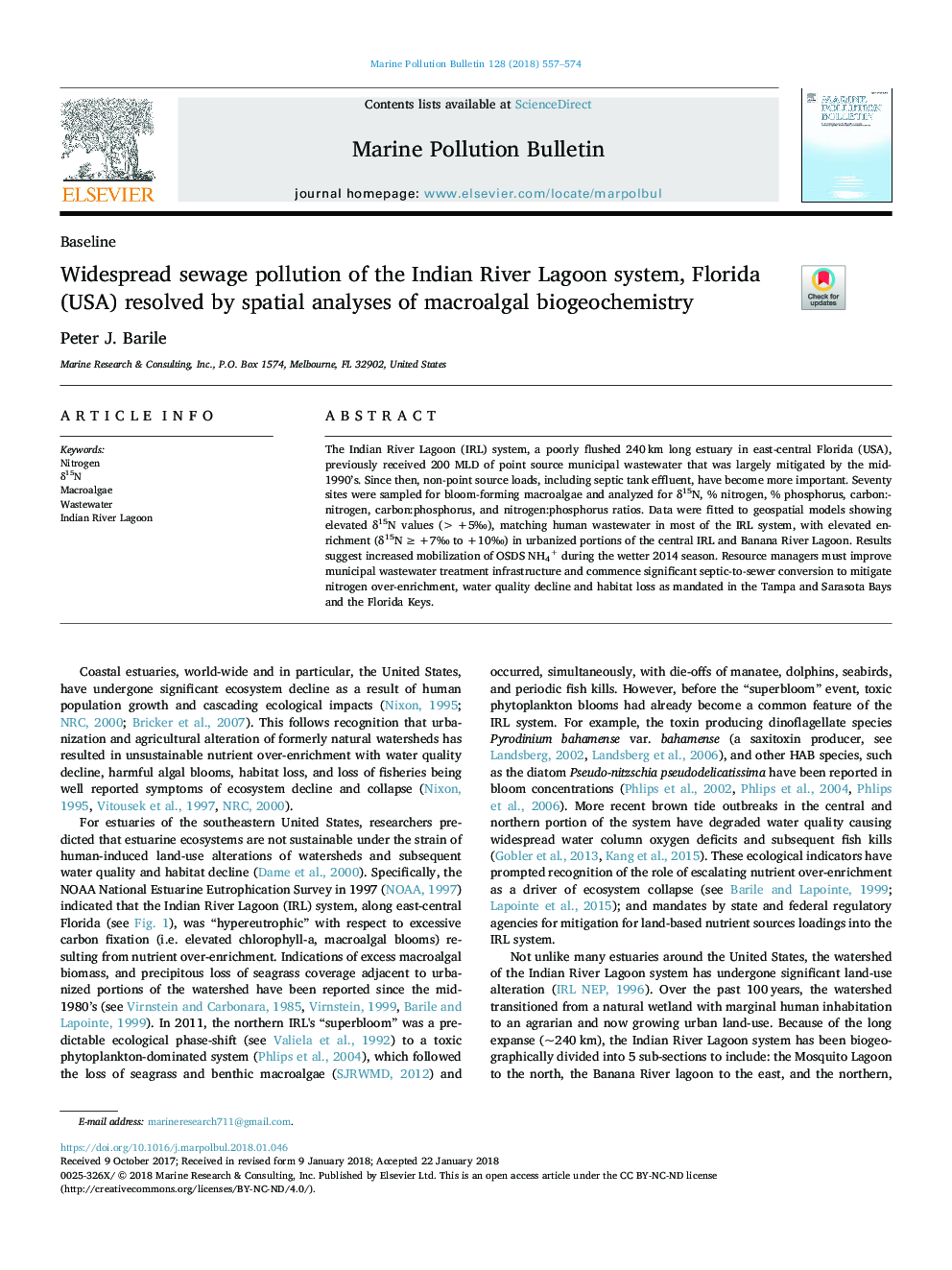| Article ID | Journal | Published Year | Pages | File Type |
|---|---|---|---|---|
| 8871954 | Marine Pollution Bulletin | 2018 | 18 Pages |
Abstract
The Indian River Lagoon (IRL) system, a poorly flushed 240â¯km long estuary in east-central Florida (USA), previously received 200 MLD of point source municipal wastewater that was largely mitigated by the mid-1990's. Since then, non-point source loads, including septic tank effluent, have become more important. Seventy sites were sampled for bloom-forming macroalgae and analyzed for δ15N, % nitrogen, % phosphorus, carbon:nitrogen, carbon:phosphorus, and nitrogen:phosphorus ratios. Data were fitted to geospatial models showing elevated δ15N values (>+5â°), matching human wastewater in most of the IRL system, with elevated enrichment (δ15Nâ¯â¥â¯+7â° to +10â°) in urbanized portions of the central IRL and Banana River Lagoon. Results suggest increased mobilization of OSDS NH4+ during the wetter 2014 season. Resource managers must improve municipal wastewater treatment infrastructure and commence significant septic-to-sewer conversion to mitigate nitrogen over-enrichment, water quality decline and habitat loss as mandated in the Tampa and Sarasota Bays and the Florida Keys.
Related Topics
Physical Sciences and Engineering
Earth and Planetary Sciences
Oceanography
Authors
Peter J. Barile,
